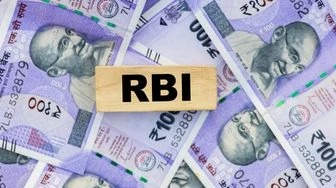In a strategic move to stabilize the Indian rupee amid ongoing external pressures, the Reserve Bank of India (RBI) is likely to intervene in the offshore Non-Deliverable Forward (NDF) market before the local market opens on September 26, 2025. This intervention aims to smooth excessive volatility and provide support to the rupee, which has recently hovered near historic lows against the US dollar.
Understanding RBI’s Intervention Strategy
The RBI’s presence in the NDF market enables it to influence the rupee’s opening level in domestic spot markets indirectly, given that NDF settlement rates set the tone for the day’s currency trading.
By selling US dollars in the offshore NDF segment, the central bank aims to curtail sharp depreciation and ease sudden swings that could disrupt market stability.
Recent activity shows the RBI adopting a calibrated, “light-touch” approach prioritizing volatility management rather than defending any fixed exchange rate level.
Key Factors Driving Currency Volatility
The rupee has been under pressure owing to a stronger US dollar globally, driven by monetary policy expectations and robust economic indicators in the US.
Domestic challenges include rising import costs—especially gold and crude oil—and heightened demand for dollars by importers hedging against uncertain global trade conditions, including US tariff announcements and visa fee surcharges.
Foreign portfolio investors have shown caution, with outflows adding to downward pressure on the rupee.
Implications Of The RBI’s Offshore Market Actions
The intervention in NDF markets allows RBI to manage currency risks without directly impacting domestic liquidity or foreign exchange reserves, given NDF is an offshore market where the rupee is not freely convertible. This method complements onshore interventions like spot market dollar sales and derivative operations to ensure a multifaceted defense against currency volatility.
Experts note that the RBI’s increased presence in the offshore market signals a proactive posture to cap rapid rupee falls while allowing gradual adjustment in line with economic fundamentals and external shocks.
Broader Market Reactions And Outlook
Indian equity markets have exhibited nervousness linked with currency fluctuations, impacting sectors like IT and imports-heavy industries.
The rupee’s stabilization effort is crucial to contain imported inflation and sustain investor confidence amid a complex macroeconomic environment.
Analysts expect RBI interventions, both offshore and domestic, to continue in the coming weeks depending on forex market behavior and global developments.
Long-term factors such as India’s inflation rate relative to trading partners and trade balance dynamics will influence the rupee’s trajectory going forward.
In summary, the Reserve Bank of India’s likely intervention in the NDF market ahead of the domestic session underlines its commitment to stabilize the rupee amid rising headwinds. This measured approach aims to protect economic growth prospects, maintain orderly market conditions, and support the nation’s financial stability while navigating global uncertainties.
Sources: Reuters, Economic Times, Business Standard, TradingView, Yahoo Finance

